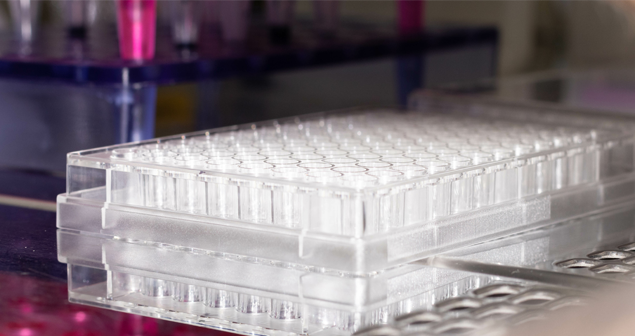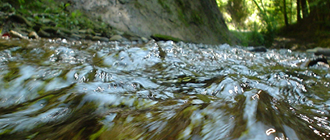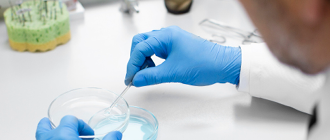A substance is genotoxic when it is likely to cause a dysfunction or an alteration of the genome by damaging the DNA which is the genetic material of the cells. This has consequences for biodiversity and human health.
The research of the genotoxic potential of an ingredient aims to evaluate the ability of this ingredient to cause this genetic damage.
The Tame-Water laboratory is able to study complex ingredients or formulas and to verify the safety of the products, to define if the molecules present are likely to be carcinogenic or not, before they are used by humans.

Benefits of genotoxicity testing
Limitation of genotoxic risks
Researchers estimate that about one third of the chemical substances likely to reach aquatic ecosystems have a genotoxic potential, i.e. a capacity to generate direct and indirect effects on the DNA of exposed cells.
Damage to DNA can have particularly dramatic consequences for living organisms, such as the initiation of carcinogenesis (cancers) and the generation of hereditary effects via mutations in germ cells (cells that produce gametes). Elements that are essential to the survival of the species can thus be affected.
It is therefore easy to understand the interest in having tools to evaluate this genotoxic potential in order to prevent and treat it.
Evaluation on a representative panel of the environment
A single test can cover neither the multiplicity of effects of pollution on living organisms nor the variability of these effects depending on the species exposed. For example, a substance that is toxic to a fish will not necessarily be toxic to an alga, and vice versa.
Assessing the toxicity of pollutants therefore requires combining bioassays targeting different biological effects and using various biological models, in an attempt to represent the biodiversity of the environment.
This is why Tame-Water relies on a panel allowing to diagnose specific damages on the genomic material of the cells used. This panel includes a bacterial genotoxicity test and one on human/animal cells.
Fast
The 96-well plate genotoxicity test is ten to one hundred times more sensitive and faster than other genotoxicity tests currently in common use.

Reformulation & ingredient substitution
These analyses provide R&D departments with valuable assistance in designing their formulas. Indeed, based on these results, the cosmetics sector has the necessary insight to validate or adapt their formula with alternative ingredients that have less impact on biodiversity.
Resources
Tame-Water has a genotoxicity panel representative of biodiversity :
- a test for human/animal cells that measures Histone H2AX phosphorylation.
- a bacterial genotoxicity test: activation of the RecA gene, a test similar to the famous SOS test.
H2aX test
The test was developed at the INRA UMR1331 laboratory (Audebert et al., 2010)
Principle :
- This genotoxicity test in human cells is based on the detection of histone H2AX phosphorylation, which is related to the presence of double strand breaks in DNA
- Histone H2AX phosphorylation is a global indication of the genotoxicity of a compound and therefore its detection is a sensitive and early indicator of the genotoxicity of compounds
Rec A
This test is based on the monitoring of the induction of the Rec A gene, component of the SOS response.
Principle :
- Genotoxic compounds induce in Escherichia coli bacteria a set of functions called the SOS response
- In the presence of genotoxicity, the RecA gene is activated to repair bacterial DNA
- The activation of this gene will trigger the expression of the reporter gene and thus lead to the generation of bioluminescence, a signal that is easy to detect
- This bioluminescent response is a global indication of the genotoxicity of a compound.











